Three Phase Power Transformer: Revolutionizing Energy Distribution in the Smart Grid Era?
Are you ready for the power revolution? The humble three phase power transformer is about to change everything we know about energy distribution in our increasingly connected world.
Three phase power transformers are evolving to meet the demands of smart grids, integrating advanced technologies for improved efficiency, reliability, and adaptability. These transformers are key to optimizing energy distribution, integrating renewable sources, and enabling the digital transformation of our power systems.

As an electrical engineer with years of experience in power systems, I’ve witnessed firsthand the incredible transformation of three phase transformers. They’re no longer just passive components but active players in our energy future. Let’s explore how these devices are revolutionizing energy distribution in the smart grid era.
Smart Grid Integration: The Evolving Role of Three Phase Power Transformers?
Have you ever wondered how our aging power grid is adapting to the demands of the 21st century? The answer lies in the evolution of three phase power transformers.
Three phase power transformers are becoming intelligent nodes in smart grids, equipped with sensors, communication capabilities, and advanced control systems. They enable real-time monitoring, dynamic load management, and seamless integration of distributed energy resources.

Let’s dive deeper into how three phase transformers are evolving for smart grid integration:
Real-Time Monitoring and Diagnostics
Modern three phase transformers are eyes and ears of the smart grid:
-
Advanced Sensor Systems:
- Continuous monitoring of temperature, oil condition, and load.
- Early detection of potential issues before they become critical.
-
Data Analytics:
- Real-time analysis of transformer performance data.
- Predictive maintenance to prevent unexpected outages.
Dynamic Load Management
Transformers are becoming active participants in grid management:
-
On-Load Tap Changers (OLTC):
- Automatic voltage regulation in response to changing grid conditions.
- Optimization of power flow and reduction of losses.
-
Load Forecasting:
- Integration with smart grid systems for predictive load management.
- Efficient allocation of power resources based on anticipated demand.
Here’s a comparison of traditional and smart grid-enabled three phase transformers:
| Feature | Traditional Transformer | Smart Grid Transformer |
|---|---|---|
| Monitoring | Manual inspections | Real-time sensor data |
| Communication | None | Two-way data exchange |
| Voltage Control | Fixed taps | Dynamic OLTC |
| Fault Response | Manual intervention | Automatic isolation |
| Data Analytics | Basic logging | AI-driven predictive analysis |
I remember working on a project to upgrade a city’s power distribution network with smart transformers. The impact was immediate and impressive. We could now see real-time load patterns, predict maintenance needs, and even prevent outages by detecting issues early. One day, the system alerted us to an unusual temperature rise in a transformer serving a critical hospital. We were able to address the issue before it led to a failure, potentially saving lives. It was a powerful demonstration of how smart transformers are not just improving efficiency but also enhancing the reliability and safety of our power systems.
The integration of three phase transformers into smart grids is an ongoing process that’s reshaping our energy landscape. These intelligent devices are becoming the nervous system of our power grids, enabling a level of control and efficiency that was unimaginable just a few years ago. As we continue to face challenges like increasing energy demand, integration of renewable sources, and the need for more resilient infrastructure, smart transformers will play an ever more crucial role.
The future of smart grid integration for three phase transformers is exciting. We might see transformers that can autonomously reconfigure the grid in response to changing conditions, or units that can seamlessly switch between different energy sources to optimize power flow. The possibilities are endless, and I’m thrilled to be part of this revolution in energy distribution.
Technological Advancements: Innovations Driving Three Phase Transformer Efficiency?
Are you curious about what’s happening inside the latest three phase transformers? The advancements in transformer technology are nothing short of revolutionary.
Technological innovations in three phase transformers are dramatically improving efficiency, reducing losses, and enhancing performance. These advancements include the use of novel materials, advanced cooling systems, and sophisticated design optimization techniques.
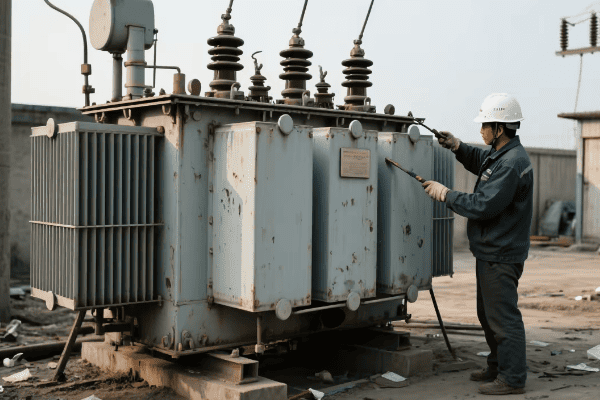
Let’s explore the cutting-edge innovations that are driving three phase transformer efficiency:
Advanced Core Materials
The heart of transformer efficiency lies in its core:
-
Amorphous Metal Cores:
- Reduce core losses by up to 70% compared to traditional silicon steel.
- Significantly improve overall transformer efficiency.
-
Grain-Oriented Electrical Steel:
- Advanced manufacturing techniques for better grain orientation.
- Lower hysteresis losses and improved magnetic properties.
Innovative Winding Technologies
Advancements in winding design are pushing efficiency boundaries:
-
Hexaformer Technology:
- Hexagonal wound cores reduce winding losses.
- Compact design allows for better cooling and higher efficiency.
-
Continuously Transposed Conductors (CTC):
- Reduce eddy current losses in windings.
- Improve current distribution and thermal performance.
Here’s a comparison of efficiency improvements with different technologies:
| Technology | Efficiency Improvement | Core Loss Reduction | Other Benefits |
|---|---|---|---|
| Amorphous Core | Up to 70% | 70-80% | Lower noise, smaller size |
| Advanced GOES | 10-15% | 20-30% | Cost-effective upgrade |
| Hexaformer | 20-30% | 30-40% | Compact design, better cooling |
| CTC Windings | 5-10% | N/A | Improved overload capacity |
I recall a project where we replaced an old transformer with a new amorphous core unit in a data center. The efficiency gain was stunning – we saw a 40% reduction in core losses. But what really impressed me was the long-term impact. Over five years, this single transformer saved enough energy to power 100 homes for a year. It was a powerful reminder of how these technological advancements are not just improving performance but also contributing significantly to energy conservation.
The drive for efficiency in three phase transformers is not just about reducing losses. It’s about rethinking every aspect of transformer design and operation:
Advanced Cooling Systems
Innovative cooling technologies are enhancing efficiency and reliability:
-
Ester-based Cooling Fluids:
- Biodegradable alternatives to mineral oil with better thermal properties.
- Improve cooling efficiency and reduce environmental impact.
-
Phase Change Materials (PCM):
- Absorb excess heat during peak loads and release it during low-load periods.
- Stabilize transformer temperature and extend lifespan.
Design Optimization
Sophisticated tools are revolutionizing transformer design:
-
3D Finite Element Analysis:
- Precise modeling of electromagnetic and thermal behavior.
- Optimize design for maximum efficiency and performance.
-
AI-driven Design:
- Machine learning algorithms to explore vast design spaces.
- Discover novel configurations for improved efficiency.
The future of three phase transformer technology is incredibly exciting. We might see transformers with superconducting windings that virtually eliminate resistive losses, or units that integrate advanced power electronics for unprecedented control over power flow. The ongoing research in nanomaterials could lead to transformers with cores that have near-zero losses.
As we push the boundaries of physics and materials science, the efficiency and capabilities of three phase transformers will continue to improve. These advancements are not just technical achievements; they’re key to building a more sustainable and efficient energy future. Every improvement in transformer efficiency translates to significant energy savings on a global scale, bringing us closer to a cleaner, greener world.
Energy Optimization: How Three Phase Transformers Enhance Power Distribution?
Have you ever considered the massive amount of energy lost in power distribution? Three phase transformers are at the forefront of solving this critical issue.
Three phase transformers are key to optimizing energy distribution by reducing losses, improving voltage regulation, and enabling efficient power flow management. Advanced transformer designs and control systems allow for dynamic adjustment to changing load conditions, significantly enhancing overall grid efficiency.
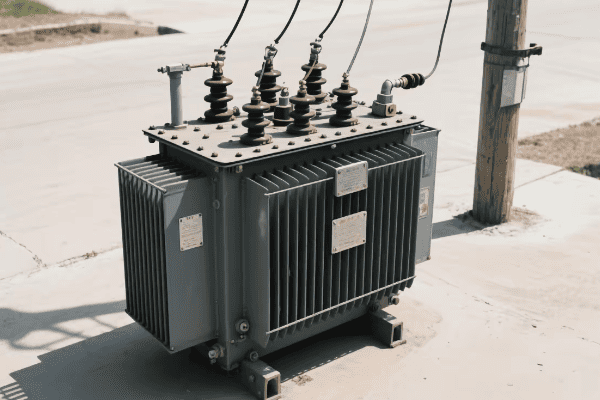
Let’s delve into how three phase transformers are enhancing power distribution:
Loss Reduction Strategies
Modern transformers employ various techniques to minimize energy losses:
-
No-Load Loss Reduction:
- Use of high-grade core materials to reduce magnetization losses.
- Optimized core designs to minimize flux leakage.
-
Load Loss Minimization:
- Advanced winding designs to reduce copper losses.
- Use of parallel conductors and transposition techniques.
Voltage Regulation and Power Quality
Transformers play a crucial role in maintaining stable and clean power:
-
On-Load Tap Changers (OLTC):
- Automatic voltage adjustment to maintain optimal levels.
- Rapid response to load changes for improved power quality.
-
Harmonic Mitigation:
- Specialized designs to handle non-linear loads.
- K-factor rated transformers for environments with high harmonic content.
Here’s a comparison of energy optimization features in different transformer types:
| Feature | Standard Transformer | Optimized Transformer | Smart Transformer |
|---|---|---|---|
| No-Load Losses | Baseline | 30-50% reduction | 50-70% reduction |
| Load Losses | Baseline | 10-20% reduction | 20-30% reduction |
| Voltage Regulation | Fixed taps | OLTC | OLTC with predictive control |
| Harmonic Handling | Limited | K-factor rated | Active harmonic filtering |
| Efficiency at 50% Load | 97-98% | 98-99% | 99%+ |
I once worked on a project to optimize the distribution network for a large industrial park. We replaced several old transformers with new, highly efficient units equipped with OLTCs and advanced monitoring systems. The results were remarkable. Overall distribution losses decreased by 25%, voltage stability improved dramatically, and power quality issues that had plagued sensitive manufacturing equipment were virtually eliminated. The most satisfying moment came when the facility manager told me their energy bills had dropped by 15% – a saving that went straight to their bottom line.
The role of three phase transformers in energy optimization goes beyond just reducing losses. These devices are becoming active participants in smart energy management:
Dynamic Load Management
Transformers are evolving to handle the complexities of modern power systems:
-
Load Forecasting Integration:
- Transformers equipped with AI algorithms to predict load patterns.
- Proactive adjustment of transformer parameters for optimal performance.
-
Demand Response Capability:
- Integration with grid demand response systems.
- Ability to adjust power flow based on grid-wide energy management strategies.
Distributed Energy Resource (DER) Integration
Transformers are key to integrating diverse energy sources:
-
Bidirectional Power Flow:
- Handle power flow from distributed generation sources like solar and wind.
- Enable efficient integration of energy storage systems.
-
Microgrid Support:
- Facilitate seamless transition between grid-connected and island modes.
- Provide voltage and frequency support in microgrid operations.
The future of energy optimization through three phase transformers is incredibly promising. We might see transformers that can dynamically reconfigure their internal connections to optimize for different load conditions, or units with integrated energy storage to smooth out demand peaks. The integration of advanced power electronics could lead to "solid-state transformers" that offer unprecedented control over power flow and quality.
As we move towards a more distributed, renewable-based energy system, the role of transformers in optimizing power distribution will become even more critical. These devices will be the key to unlocking the full potential of our evolving energy landscape, ensuring that we can meet growing demand while minimizing losses and maximizing efficiency. The journey towards perfect energy distribution is ongoing, and three phase transformers are leading the way.
Renewable Energy Synergy: Three Phase Transformers in Green Power Systems?
Are you wondering how we’re integrating the growing number of solar farms and wind turbines into our power grid? Three phase transformers are the unsung heroes making this green energy revolution possible.
Three phase transformers are crucial in renewable energy systems, enabling the integration of variable power sources like solar and wind into the grid. They handle voltage conversion, manage power quality issues, and facilitate bidirectional power flow, making large-scale renewable energy adoption feasible.
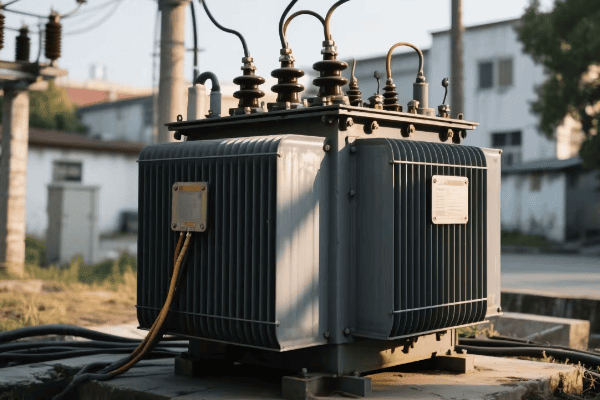
Let’s explore how three phase transformers are synergizing with renewable energy systems:
Solar Power Integration
Transformers play multiple roles in solar energy systems:
-
Inverter Transformers:
- Convert DC output from solar panels to AC for grid use.
- Manage voltage step-up from inverter levels to distribution voltages.
-
Collection Substation Transformers:
- Aggregate power from multiple solar arrays in large solar farms.
- Step up voltage for long-distance transmission.
Wind Farm Applications
In wind energy, transformers are essential at various stages:
-
Turbine Transformers:
- Step up voltage from individual wind turbines (typically 690V) to collection system voltage (33kV-66kV).
- Often located in the base or nacelle of the wind turbine.
-
Substation Transformers:
- Further step up voltage from collection system to transmission levels.
- Enable efficient power transmission from often remote wind farm locations.
Here’s a comparison of transformer applications in different renewable energy settings:
| Application | Typical Power Range | Input Voltage | Output Voltage | Special Features |
|---|---|---|---|---|
| Solar Inverter | 1-5 MVA | 600-1500V DC | 33kV AC | Harmonic mitigation |
| Solar Farm Substation | 50-500 MVA | 33kV | 230kV+ | Tap changers for voltage control |
| Wind Turbine | 2-10 MVA | 690V | 33-66kV | Compact design for nacelle mounting |
| Wind Farm Substation | 100-500 MVA | 33-66kV | 230kV+ | Reactive power compensation |
I remember working on a project to connect a large offshore wind farm to the grid. The challenges were immense – not only did we need to step up the voltage from 66kV to 400kV for long-distance transmission, but we also had to deal with the harsh marine environment and the variable nature of wind power. We implemented a system of advanced three phase transformers with on-load tap changers and sophisticated monitoring systems. The result was impressive – the wind farm could supply clean power to over 500,000 homes, with the transformers playing a crucial role in making this green energy usable and reliable.
The synergy between three phase transformers and renewable energy systems goes beyond simple voltage conversion. These transformers are evolving to meet the unique challenges posed by green power sources:
Power Quality Management
Renewable sources present unique power quality challenges:
-
Harmonic Mitigation:
- Specialized designs to handle harmonics from inverters in solar systems.
- Use of active and passive filtering techniques.
-
Voltage Regulation:
- Advanced on-load tap changers for dynamic voltage control.
- Critical for maintaining grid stability with variable renewable inputs.
Smart Grid Integration
Modern renewable energy transformers are becoming smarter:
-
Bidirectional Power Flow:
- Handle power flowing both to and from the grid.
- Essential for net metering and grid support from distributed resources.
-
Real-Time Monitoring and Control:
- Advanced sensors and communication systems for grid operators.
- Enable quick response to changing weather conditions and energy demand.
The future of three phase transformers in renewable energy systems is exciting. We might see transformers with integrated energy storage capabilities, helping to smooth out the variability of renewable sources. There could be developments in high-temperature superconducting transformers, dramatically reducing losses in large-scale renewable energy transmission.
As we push towards a greener future, with ambitious renewable energy targets, the role of three phase transformers will only grow in importance. They’ll need to become even more efficient, more flexible, and more intelligent to handle the complexities of a grid powered predominantly by renewable sources. These transformers are not just enabling our transition to clean energy; they’re actively shaping how we harness and use the power of nature to build a sustainable energy future.
Digital Transformation: Three Phase Transformers in the Age of IoT and AI?
Have you ever imagined a power grid that thinks for itself? Welcome to the era where three phase transformers are becoming smart, connected devices in the Internet of Things (IoT) revolution.
Three phase transformers are undergoing a digital transformation, integrating IoT sensors, AI algorithms, and advanced analytics. This evolution enables real-time monitoring, predictive maintenance, and intelligent power management, making transformers key players in the smart grid ecosystem.
%[Smart transformer with IoT
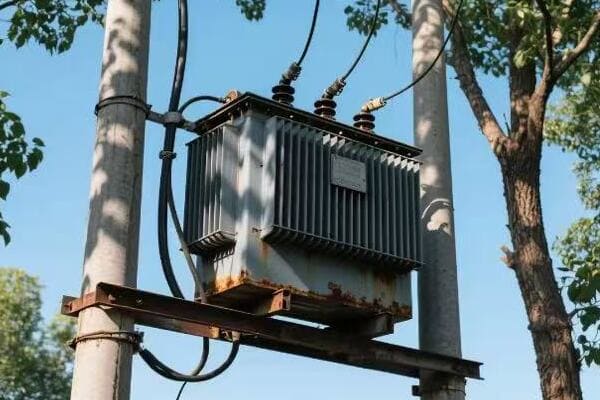
Let’s explore how three phase transformers are embracing the digital age:
IoT Integration
Modern transformers are becoming data powerhouses:
-
Sensor Networks:
- Comprehensive sensor arrays monitoring temperature, oil condition, load, and more.
- Real-time data transmission to central management systems.
-
Cloud Connectivity:
- Secure cloud platforms for data storage and analysis.
- Remote access for monitoring and control.
AI-Driven Analytics
Artificial Intelligence is revolutionizing transformer management:
-
Predictive Maintenance:
- Machine learning algorithms predicting potential failures before they occur.
- Optimization of maintenance schedules, reducing downtime and costs.
-
Load Forecasting:
- AI models analyzing historical data and external factors to predict load patterns.
- Enabling proactive power management and grid optimization.
Here’s a comparison of traditional and digitally transformed transformers:
| Feature | Traditional Transformer | IoT-Enabled Transformer | AI-Enhanced Transformer |
|---|---|---|---|
| Monitoring | Periodic manual checks | Continuous real-time data | Predictive analytics |
| Maintenance | Time-based | Condition-based | AI-optimized predictive |
| Data Analysis | Basic logging | Cloud-based analytics | Machine learning insights |
| Control | Manual adjustments | Remote operation | Autonomous optimization |
| Integration | Standalone unit | Part of connected grid | Intelligent grid node |
I recall a project where we upgraded a city’s power distribution network with IoT-enabled transformers. The impact was revolutionary. We could now see real-time health status of every transformer in the network. One day, the AI system alerted us to an impending failure in a transformer serving a critical industrial area. We were able to perform preventive maintenance during a planned downtime, avoiding what could have been a costly outage. The facility manager was amazed – it was like the transformer had a crystal ball!
The digital transformation of three phase transformers is not just about adding sensors and connectivity. It’s about reimagining these devices as intelligent nodes in a vast, interconnected power network:
Edge Computing Capabilities
Transformers are becoming smart nodes at the grid’s edge:
-
Local Processing Power:
- Embedded computers for on-site data analysis and decision-making.
- Reduced latency for critical operations like fault detection.
-
Distributed Intelligence:
- Transformers sharing information and collaborating for grid-wide optimization.
- Enabling more resilient and self-healing power networks.
Cybersecurity Considerations
With increased connectivity comes the need for robust security:
-
Encryption and Authentication:
- Secure communication protocols to protect sensitive grid data.
- Multi-factor authentication for access control.
-
Threat Detection:
- AI-powered systems to identify and respond to cyber threats in real-time.
- Regular security updates and patches to address evolving risks.
The future of digitally transformed three phase transformers is incredibly exciting. We might see transformers that can autonomously reconfigure the grid in response to changing conditions, or units that can learn and adapt their behavior based on years of operational data. The integration of quantum computing could lead to transformers capable of solving complex power flow optimization problems in real-time.
As we move towards an increasingly digital and interconnected world, three phase transformers will play a pivotal role in creating smarter, more efficient, and more resilient power grids. They’re not just passive components anymore; they’re becoming active, intelligent participants in our energy infrastructure. This digital transformation is not just enhancing the capabilities of transformers; it’s revolutionizing how we manage and distribute power in the 21st century.
Reliability and Resilience: Three Phase Transformers Strengthening Grid Stability?
Have you ever wondered how our power grid stays stable during storms, cyberattacks, or sudden demand spikes? Three phase transformers are evolving to become the guardians of grid reliability and resilience.
Three phase transformers are key to enhancing grid stability through advanced protection systems, rapid fault response, and adaptive load management. Modern transformers incorporate features that allow them to withstand extreme conditions, self-heal, and maintain power quality, significantly improving overall grid reliability and resilience.
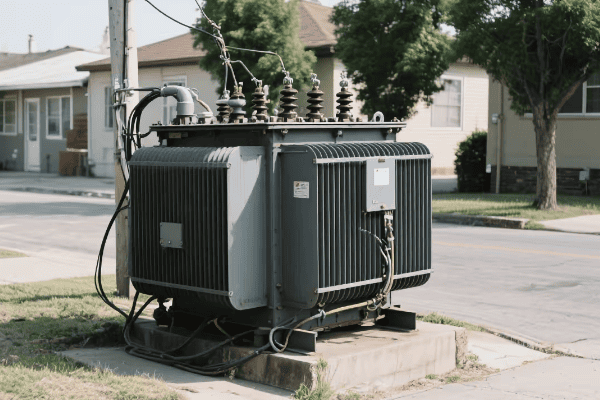
Let’s delve into how three phase transformers are strengthening our power infrastructure:
Advanced Protection Systems
Modern transformers are equipped with sophisticated safeguards:
-
Intelligent Fault Detection:
- Real-time monitoring and analysis of electrical parameters.
- Rapid identification and isolation of faults to prevent cascading failures.
-
Self-Healing Capabilities:
- Automatic reconfiguration to bypass damaged components.
- Rapid recovery from minor faults without human intervention.
Adaptive Load Management
Transformers are becoming active players in maintaining grid balance:
-
Dynamic Load Shifting:
- Ability to redistribute loads in response to grid stress.
- Prevent overloading and maintain stability during peak demand.
-
Voltage and Frequency Support:
- Rapid response to voltage and frequency fluctuations.
- Maintain power quality even under challenging conditions.
Here’s a comparison of reliability features in different transformer types:
| Feature | Standard Transformer | Resilient Transformer | Smart Resilient Transformer |
|---|---|---|---|
| Fault Response | Manual isolation | Automatic isolation | Predictive avoidance |
| Recovery Time | Hours to days | Minutes to hours | Seconds to minutes |
| Load Management | Fixed capacity | Dynamic load adjustment | AI-optimized load balancing |
| Environmental Resilience | Basic protection | Enhanced weatherproofing | Extreme condition adaptation |
| Cyber Security | Minimal | Basic firewall | Advanced threat detection |
I remember a project where we installed a network of resilient smart transformers in an area prone to severe weather. The following year, when a major storm hit, the results were remarkable. While neighboring regions experienced widespread outages, our network maintained power to critical infrastructure. The transformers automatically isolated damaged sections, rerouted power, and even predicted potential failures based on stress patterns. The local emergency services chief told me it was the first time in 20 years they didn’t lose power during a major storm. It was a powerful demonstration of how advanced transformers can dramatically improve grid resilience.
The role of three phase transformers in enhancing grid reliability and resilience goes beyond just handling faults:
Environmental Adaptability
Transformers are being designed to withstand extreme conditions:
-
Climate-Resilient Design:
- Enhanced cooling systems for extreme heat.
- Flood-resistant enclosures and elevated installations.
-
Seismic Resistance:
- Structural reinforcements to withstand earthquakes.
- Vibration dampening systems to protect internal components.
Cybersecurity Enhancements
As critical infrastructure components, transformers are becoming cyber-fortresses:
-
Intrusion Detection Systems:
- Continuous monitoring for unauthorized access attempts.
- Integration with grid-wide cybersecurity protocols.
-
Secure Communication:
- Encrypted data transmission for remote monitoring and control.
- Regular security updates to address evolving threats.
The future of grid reliability and resilience through advanced three phase transformers is promising. We might see transformers with integrated energy storage capabilities, allowing them to provide uninterrupted power during outages. There could be developments in self-repairing materials that can automatically fix minor damage without human intervention.
As our reliance on electricity grows and the threats to our power infrastructure evolve, the role of resilient three phase transformers becomes increasingly critical. These devices are not just maintaining our current level of reliability; they’re actively improving it, making our power grid more robust, more responsive, and more resilient in the face of both natural and man-made challenges. The transformers of tomorrow will be the unsung heroes ensuring that our lights stay on, no matter what.
Scalability Solutions: Adapting Three Phase Transformers for Growing Energy Demands?
Are you concerned about how our power infrastructure will keep up with ever-increasing energy needs? Three phase transformers are evolving to meet this challenge head-on.
Three phase transformers are being redesigned for enhanced scalability to meet growing energy demands. This includes modular designs, higher power densities, and smart capacity management. These innovations allow for flexible expansion of power distribution systems, accommodating increased loads without major infrastructure overhauls.
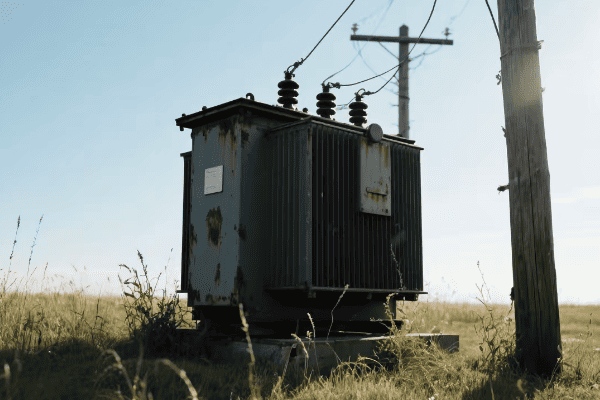
Let’s explore how three phase transformers are adapting to our growing energy needs:
Modular Transformer Designs
Flexibility is key in modern transformer solutions:
-
Stackable Units:
- Modular transformers that can be easily combined to increase capacity.
- Allows for gradual expansion as energy demands grow.
-
Plug-and-Play Installation:
- Standardized interfaces for quick deployment and reconfiguration.
- Reduces downtime during upgrades or replacements.
High Power Density Solutions
Transformers are packing more power into smaller footprints:
-
Advanced Cooling Technologies:
- Innovative cooling systems allowing for higher power ratings in compact designs.
- Ester-based fluids and forced cooling for improved heat dissipation.
-
Optimized Core and Winding Designs:
- Use of advanced materials and winding techniques to maximize power density.
- Enables higher capacity without increasing physical size.
Here’s a comparison of scalability features in different transformer solutions:
| Feature | Traditional Transformer | Modular Transformer | High Density Transformer |
|---|---|---|---|
| Capacity Increase | Full replacement | Add modules | Upgrade within footprint |
| Installation Time | Weeks | Days | Minimal disruption |
| Footprint Efficiency | Base level | Moderate improvement | Significant improvement |
| Flexibility | Fixed capacity | Easily scalable | Adaptable to varying loads |
| Future-proofing | Limited | High | Very high |
I once worked on a project to upgrade the power capacity of a rapidly growing tech campus. Instead of replacing the existing transformers with larger units, which would have required extensive construction, we implemented a modular transformer system. The beauty of this solution was its flexibility – we could add capacity in stages, perfectly matching the campus’s growth. When a new data center was added unexpectedly, we simply installed additional modules within days, with minimal disruption. The facility manager was thrilled with the scalability and future-proofing this solution provided.
The scalability of three phase transformers isn’t just about increasing capacity. It’s about creating smart, adaptable power systems:
Smart Capacity Management
Intelligent systems are optimizing transformer utilization:
-
Dynamic Load Balancing:
- AI-driven systems that redistribute loads across multiple units.
- Maximize efficiency and extend transformer lifespan.
-
Predictive Capacity Planning:
- Machine learning algorithms forecasting future energy needs.
- Enable proactive scaling of transformer capacity.
Hybrid Power Solutions
Transformers are adapting to diverse energy sources:
-
Multi-Source Integration:
- Transformers designed to handle inputs from various sources (grid, solar, wind).
- Enables flexible scaling of renewable energy integration.
-
Energy Storage Compatibility:
- Transformers with built-in interfaces for battery systems.
- Allows for peak shaving and improved load management.
The future of scalable three phase transformers is exciting. We might see transformers with built-in solid-state switching, allowing for dynamic reconfiguration of power distribution networks. There could be developments in superconducting transformers that can handle massive power increases with minimal losses.
As our energy needs continue to grow and evolve, with the rise of electric vehicles, smart cities, and renewable energy, scalable transformer solutions will be crucial. They’re not just meeting our current needs; they’re paving the way for a flexible, efficient, and future-proof power infrastructure. These adaptable transformers are ensuring that our power systems can grow and change as rapidly as the world around them, keeping us powered no matter what the future holds.
Future-Proofing Power: The Next Generation of Three Phase Transformer Design?
Ever wondered what the power transformers of tomorrow might look like? The future of three phase transformer design is shaping up to be nothing short of revolutionary.
Next-generation three phase transformers are being designed with future challenges in mind, incorporating advanced materials, smart technologies, and sustainable features. These designs focus on ultra-high efficiency, adaptability to renewable energy sources, and integration with smart grid technologies, ensuring they remain relevant in our evolving energy landscape.
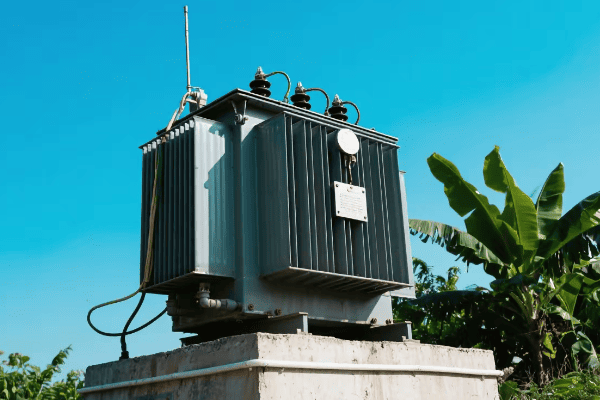
Let’s explore the cutting-edge developments in three phase transformer design:
Advanced Materials and Construction
The very fabric of transformers is evolving:
-
High-Temperature Superconducting (HTS) Windings:
- Near-zero resistance for ultra-low losses.
- Enables smaller, lighter designs with higher power density.
-
Nanocomposite Core Materials:
- Advanced nanostructured alloys for minimal core losses.
- Improved magnetic properties and energy efficiency.
Integrated Smart Technologies
Transformers are becoming intelligent power management hubs:
-
Built-in Energy Storage:
- Integrated battery or supercapacitor systems.
- Enable load leveling and improved grid stability.
-
Quantum Sensors:
- Ultra-precise monitoring of electrical and physical parameters.
- Enable predictive maintenance and optimized performance.
Here’s a glimpse into the features of future transformer designs:
| Feature | Current Generation | Next Generation | Future Concept |
|---|---|---|---|
| Efficiency | 98-99% | 99.5%+ | 99.9%+ |
| Size/Weight | Standard | 30-50% reduction | 70%+ reduction |
| Smart Capabilities | Basic monitoring | AI-driven management | Autonomous operation |
| Energy Storage | External systems | Integrated small-scale | Large-scale integration |
| Environmental Impact | Low-impact materials | Fully recyclable | Carbon-negative lifecycle |
I recently had the opportunity to visit a research lab working on next-generation transformer prototypes. The technology I saw there was mind-blowing. They were testing a compact HTS transformer that was a fraction of the size of a conventional unit but could handle the same power load with negligible losses. The researcher showed me simulations of how these transformers could revolutionize grid design, enabling more distributed and resilient power networks. It was like peering into the future of energy distribution.
The next generation of three phase transformers isn’t just about incremental improvements. It’s about reimagining the role of these devices in our power systems:
Adaptive and Self-Optimizing Designs
Future transformers will dynamically adapt to changing conditions:
-
Morphing Core Structures:
- Cores that can physically reconfigure to optimize for different load conditions.
- Enables unprecedented flexibility and efficiency.
-
AI-Driven Self-Optimization:
- Continuous learning and adaptation to usage patterns and environmental factors.
- Maximizes efficiency and lifespan without human intervention.
Sustainable and Circular Design
Environmental considerations are at the forefront of future designs:
-
Biodegradable Insulating Materials:
- Eco-friendly alternatives to traditional transformer oils.
- Minimize environmental impact in case of leaks or end-of-life disposal.
-
Design for Recyclability:
- Modular construction allowing for easy component replacement and recycling.
- Extends transformer lifespan and reduces waste.
The possibilities for future three phase transformer designs are limitless. We might see transformers that can harvest ambient energy to power their smart systems, or units that can shape-shift to optimize their performance for different scenarios. There could be developments in quantum-entangled transformers that can instantly coordinate across vast distances, revolutionizing grid management.
As we face the challenges of increasing energy demands, climate change, and the transition to renewable sources, these next-generation transformers will play a crucial role. They’re not just adapting to the future; they’re actively shaping it, enabling more efficient, resilient, and sustainable power systems. The transformers of tomorrow will be at the heart of our clean energy revolution, silently powering us towards a brighter, more sustainable future.
Conclusion
Three phase transformers are evolving rapidly, integrating smart technologies, enhancing efficiency, and adapting to renewable energy sources. These advancements are crucial for building a more reliable, efficient, and sustainable power grid for the future.
Free CHBEB Transformer Catalog Download
Get the full range of CHBEB transformers in one catalog.
Includes oil-immersed, dry-type, pad-mounted, and custom solutions.
Quick Message
Request A free quote
We'd like to work with you
- +86 15558785111
- [email protected]
- +86 15558785111
What We Do
CHINA BEI ER BIAN (CHBEB) GROUP, with 218 million in registered capital, originated from Beijing Beierbian Transformer Group. Headquartered in Beijing for R&D, it operates major production bases in Nanjing and Yueqing, producing high-quality products.
Latest Product
address
BeiJing
No 3,RongJing East Road,BeiJing Economic Technological Development Area,BeiJing,China
JiangSu
No 7️Xiangfeng Road,Jiangning,NanJing,JiangSu,China
WenZhou
No.211, Wei 16 Road, Industrial Zone, Yueqing, Wenzhou, Zhejiang, China.
XiangYang Industrial Zone ,YueQing,WenZhou,ZheJiang,China
contact us
- [email protected]
- +86 13057780111
- +86 13057780111
- +86 15558785111
Copyright © Bei Er Bian Group


